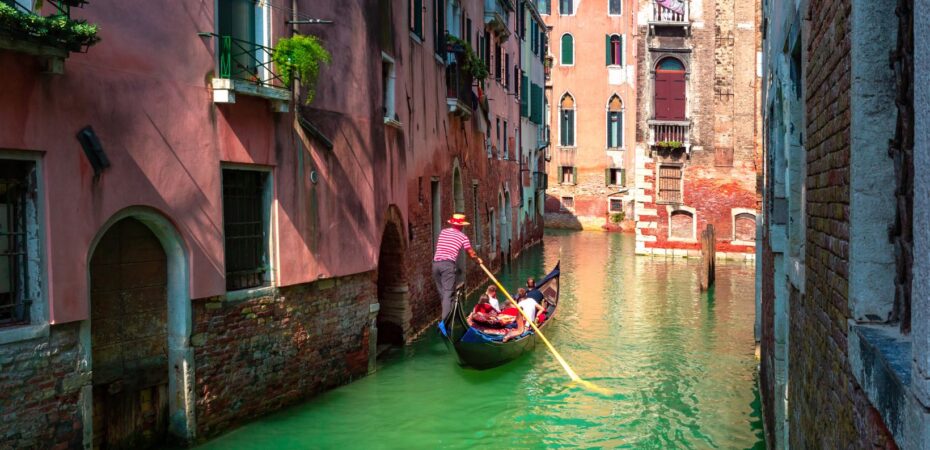Italy is one of the most visited countries in the world thanks to its scenic, artistic, cultural and gastronomic beauty. In this nation it is possible to make different types of trips, by organizing renowned and popular itineraries, but also more alternative and original routes to discover fascinating and not too crowded places.
In this article, in fact, we will propose an unusual itinerary in southern Italy, in the footsteps of Frederick II of Swabia, fascinating Emperor of the Holy Roman Empire, King of Sicily, and prominent figure in the medieval Mediterranean. This is a particularly fascinating tour, however, there are numerous themes that can guide you through the wonderful lands of Italy. It is important to keep in mind that in order to embark on such an adventure, you need to turn to professionals in the field to find out how to organize your trip to Italy in 13 days without worries.
Who was Frederick II of Swabia
Known as the “Stupor Mundi” (wonder of the world), Frederick II made a profound mark on Italian history. He was a patron of the arts, an innovator in science, a skilled politician and a fine military strategist, and his reign stretched from Sicily to the Apulian coast and as far as Germany. Retracing the footsteps of Frederick II of Swabia means embarking on a journey among iconic castles, ancient cities and enchanting territories.
This itinerary is a profound experience, inviting you to discover the history of medieval Italy through the architectural masterpieces and historic sites that Frederick bequeathed, but also through his cultured and curious personality.
Sicily: Palermo and the roots of power
The beating heart of Frederick II’s empire was Sicily, and especially Palermo. Here, the Norman Palace is an essential stop on a journey through Italy in the footsteps of Frederick II.

An ancient political center of Sicily, this palace is still the seat of the Regional Assembly and houses the Palatine Chapel, an architectural jewel that blends Byzantine, Arab and Norman styles. Frederick’s Palermo was a wonderful, cosmopolitan place where different cultures coexisted and influenced each other, and visiting it today is a gateway to that era of prosperity.
The remains of Frederick II, his wife and parents lie in the royal tombs of Palermo Cathedral.
Apulia: among castles and ancient cities
Frederick II particularly loved Apulia, so much so that he made this region a strategic base for his empire. Here, among fields and hills, he built some of his best-known castles, including the famous Castel del Monte, now a UNESCO World Heritage Site. Its original function is still debated among scholars, but its beauty and architectural precision attract thousands of visitors every year.
In Apulia, however, there are also ancient cities refounded by this very emperor, such as Altamura, where the emperor also ordered the construction of a cathedral. To commemorate the city’s origins, every year in April Federicus is organized: a medieval festival in honor of Emperor Frederick II of Swabia during which the center of the city is decorated in medieval style and activities reenacting the life of the time and accurate historical costumed parades take place.
Naples and the university
Naples was another beloved city for Frederick II, who founded Europe’s first secular university here in 1224.
This institution, established to train a new ruling class loyal to the empire, is still active today and testifies to the tangible link with Frederick’s intellectual legacy.
Basilicata and Calabria: the frontier of the kingdom
Between Basilicata and Calabria are other castles and defensive structures commissioned by Frederick II, built in strategic positions to guard communication routes.

One of these is the Castle of Lagopesole, in Basilicata, used by the emperor as a hunting lodge. This castle still retains an intact medieval charm and tells a chapter of Frederick’s life related to his passion for falconry and nature.
Marche: Jesi and the Birthplaces
To conclude the journey in the footsteps of Frederick II of Swabia, a visit to Jesi, in the Marche region, where Frederick was born in 1194, is a must.
Jesi, as Altamura, celebrates the figure of the emperor every year with historical re-enactments and medieval festivals that enliven the streets of the town. Here one can experience a more intimate dimension of Frederick’s life, allowing one to explore not only the history but also the deep connection between the ruler and the Marche region.


 By
By 




